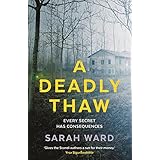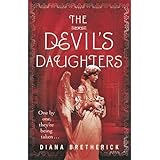BLURB: ‘Gives the Scandi authors a run for their money.’ Yrsa Sigurðardóttir
Every secret has consequences.
Autumn 2004 – In Bampton, Derbyshire, Lena Fisher is arrested for suffocating her husband, Andrew.
Spring 2016 – A year after Lena’s release from prison, Andrew is found dead in a disused mortuary.
Who was the man Lena killed twelve years ago, and who committed the second murder? When Lena disappears, her sister, Kat, sets out to follow a trail of clues delivered by a mysterious teenage boy. Kat must uncover the truth – before there’s another death . . .
A Deadly Thaw confirms Sarah Ward’s place as one of the most exciting new crime writers.
First of all, it’s an honour and a huge pleasure to kick off the Blog Tour to promote Sarah Ward’s second book. A Deadly Thaw, the follow-up to the wonderful debut In Bitter Chill, is one of the most anticipated books of 2016, for me, at least. I had little doubt that Ward would be able to follow up her first book in style, and I’m delighted to say I was right – in fact, in my humble opinion, A Deadly Thaw is actually the better book. But I’ll get to why that is in a moment.
The big mystery at the beginning of the book is why, and who – why would Lena kill this man and identify him as being her husband? And who is this man, whose remains were cremated, leaving no DNA?
Like In Bitter Chill, this book takes a trip into the past, where the beginning of the mystery lies – the ’80s, in this case. This is something I really enjoy in books, and when the author’s roughly the same age as you, as I think is the case with Sarah Ward and me, there’s plenty of memories that these trips into the past bring back. Back then, the two sisters were much closer, sharing every secret. They, and a third girl, Steph, would go out clubbing to the only place in Bampton that let them in, a meat market called Ups And Downs (there was one here – called the Mantrap!) Then, in her mid-teens, Lena withdrew from Kat, and refused to leave home for university despite her obvious talent for, and love of, art. When Lena is released from prison, she returns to the now-dilapidated family home where Kat still lives, struggling to keep it from falling down around her ears with her income as a counsellor. Things remain the same – Lena is unwilling to talk about anything that doesn’t suit her, particularly her crime. Then the real Andrew Fisher is found dead, and the police come to question Lena, as she has to be a prime suspect. When they return the next day, she’s disappeared, without a word to Kat.
That’s as much as can be said about plot, without getting into spoiler territory, but it’s a fantastically mystifying plot for the reader, and the police. It’s wonderful to see the three main police officers return – DI Francis Sadler, DS Damian Palmer, and my personal favourite, DC Connie Childs. We continue to follow their personal lives, with some intriguing developments on that front!
As the storyline unraveled I was utterly glued to the book, as I couldn’t in any way comprehend Lena’s crime. Lena is an utterly infuriating character – she keeps secrets, and makes assumptions about other people, as if she’s the only person in a position to deal with them. It’s as she had some kind of martyr complex. In the end, this would put people in danger.
This has a much more complex storyline than her debut, and there’s a topical touch to it. It shows Ward’s growing confidence and maturity as a writer. On the strength of her first two novels, I can easily see her developing into one of the big names in crime fiction. Definitely one for crime fans to buy as soon as possible!
Released1September.
My thanks to Faber for my review copy.
Follow the Blog Tour – at http://kiwicrime.blogspot.co.uk tomorrow!



